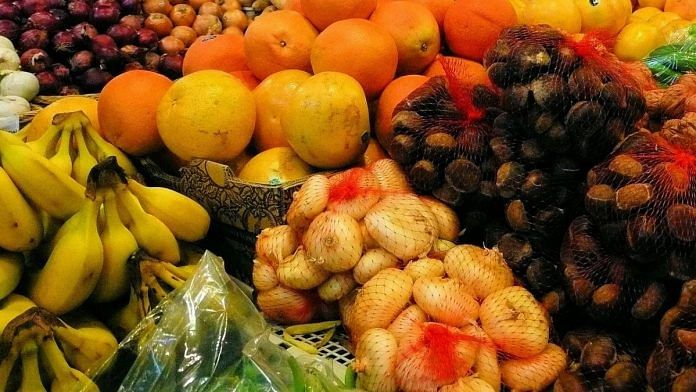“Drink milk on an empty stomach”, “Don’t mix fruits”, “Don’t eat meat and potato together” – sound familiar? These are popular tips on ‘food combining’ floating on social media and followed by many. No matter how dubious these claims are, or that there is no evidence backing these guidelines, most of us are simply not ready to look past them. After all, these come from popular names, family members, brands, and establishments. Well, where is the science in all this?
Let’s start by answering what food combining is. First, it’s not a new concept. It has roots in Ayurveda and has been practised since. According to this principle, you shouldn’t combine certain food groups and avoid certain foods at specific times of the day. For example, combining certain protein-rich foods with high-carbohydrate foods causes toxins to build up in the host and eventually leads to chronic illness. Those who live by the food combining theory also follow the pH principle. They believe in avoiding combinations that require different pH levels to be digested.
To combine food, we first need to categorise them into different groups – carbs, protein, fat, sweet fruits, acidic fruits, melons and vegetables. We can also classify them in terms of their pH level. It’s also important to remember that food combinations cannot be arbitrary. To utilise the method effectively, it’s vital to put groups together methodically in a meal. Some most common rules in food combining are – eat fruits on an empty stomach, avoid combining starch and meats, avoid combining different proteins, drink milk only on empty stomach, etc.
Also Read: Millet dosa or Millet biryani? Read the fine print on the food fad of the future
Digestive system follows principle of biochemistry
The food combining principle is pulled from ancient alternative therapy textbooks. Since the ‘why’ and ‘hows’ are not addressed with well-constructed. The molecular mechanisms of digestion are complex and handle multiple nutrients at the same time.
Food combining theory warns about the rotting of food in the gut, which is practically impossible as the stomach has an extremely acidic (pH 2) environment for any harmful microorganism that could decompose that food, to survive. In addition, digestion doesn’t end in the stomach. The stomach prepares the food for digestion by mixing it with enzymes and acid. The most important components of digestion are carried out by the small intestine. Undigested foods go to the large intestine and are excreted as faeces.
The digestive system is wired to perform digestion and absorption simultaneously for carbs, protein and fats as most food contains all three nutrients. Enzymes involved in digestion act on specific food groups according to their biochemical makeup. All three macronutrients have specific receptors to bind with their respective enzymes and so they don’t need to compete over enzyme availability. Moreover, enzymes specific to carbs, protein and fat are secreted. simultaneously even though you eat foods containing a single nutrient. So, until our gut is damaged, we can digest any combination of food at the same time.
Also Read: Are you gaining weight? Get gut-healthy
Does food combining help or make things worse
Food combining principles originated 100 years back when the world did not have much understanding of nutrition or digestion. Certainly, modern nutrition science and biochemistry fail to explain these principles, considering the lack of experimental evidence. Back in 2020, a study attempted to assess if a food-combining diet had any effect on weight loss. The participants were divided into two groups. One was given a balanced diet and the other, food-combining diet for 6 weeks. Both these groups reported 6 to 8 kg weight loss with no extra benefits obtained from a food combining diet over a balanced diet.
Food combining theory claims that eating ‘wrong’ foods together can alter the pH environment of the digestive system as they are either acidic or alkaline in nature. However, the body is capable of maintaining the optimum pH of the digestive system on its own without getting influenced by pH from foods.
Let’s get one thing straight. “Don’t mix fruits” is a fad. Food combining theory suggests that you should only eat fruits on an empty stomach because serving them together slows digestion, causes indigestion, and a myriad of other problems. These claims have not yet been proven.
According to another claim, ‘different fruits digest at different rates’, so one should avoid mixing them. However, All fruits contain fructose (carbohydrate), protein, and fat, and all these macronutrients go through digestion and absorption mechanisms discussed earlier. Food combining theorists also advise avoiding eating fruits and vegetables together. However, we should note that both food groups contain starch and carbohydrates that our digestive system, and more specifically digestive enzymes, cannot separate.
Also Read: Overdosed on Diwali sweets? Here’s how you can recover
Bottomline on food combining
Some food combinations are backed by sound scientific evidence such as consuming Vitamin C to ensure optimum iron absorption, eating fat-containing foods to absorb fat-soluble vitamins and not combining calcium and oxalate containing foods to avoid elevated risk of kidney stones. That said, most food combining guidelines don’t follow the rules of human physiology, so unless we have sound evidence to prove they work, we should avoid following them.
Subhasree Ray is Doctoral Scholar (Ketogenic Diet), certified diabetes educator, and a clinical and public health nutritionist. She tweets @DrSubhasree. Views are personal.
(Edited by Srinjoy Dey)



